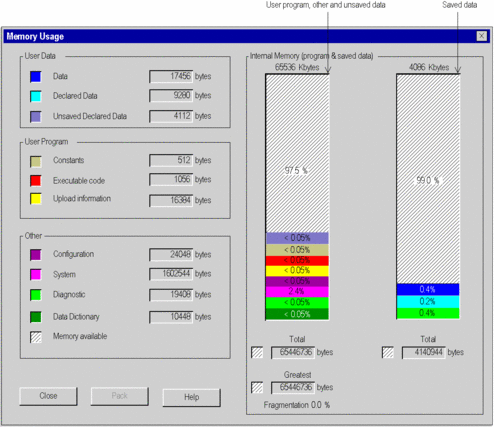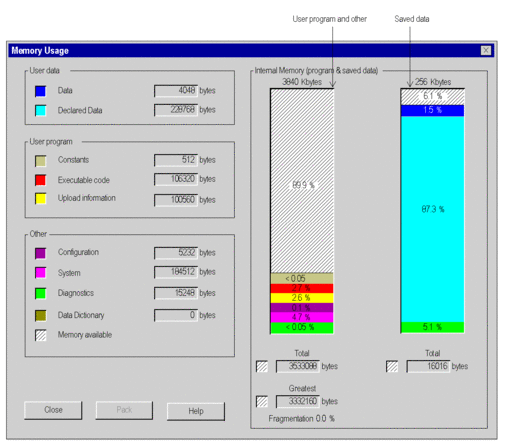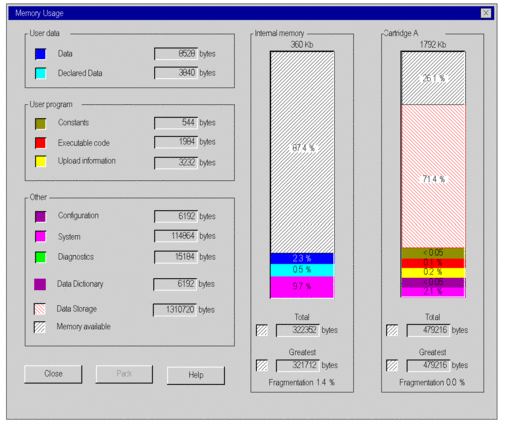At a Glance
The memory usage function is used to view:
the physical distribution of the PLC memory (internal memory and memory card)
the space taken up in the memory by a project (data, program, configuration, system)
It can also be used to reorganize the memory where possible.
If the application has been built and if it is in NOT BUILT state due to a program modification, the screen is accessible, but it corresponds to the application built previously. Modifications will be taken into account at the next build.
Procedure
Perform these actions to access the memory usage details of the PLC:
Step |
Action |
|---|---|
1 |
Activate the command, which displays the corresponding screen. The memory usage statistics of a project can only be accessed if you have generated its executable in advance. |
2 |
If you want to reorganize the memory to optimize it, activate the command. |
Memory usage screen Modicon M580
The memory usage screen is shown below:

Memory usage screen Modicon M340
The memory usage screen is shown below:

Memory usage screen Premium/Quantum
The memory usage screen of a PLC with a memory card and data storage is shown below. If the PLC does not have a memory card, only the information relating to the internal memory is displayed.

Description of the parameters
The following information fields are available:
Parameter |
Description |
|---|---|
|
This field indicates the memory space (in words) taken up by user data (objects relating to configuration):
|
|
This field indicates the memory space (in words) taken up by the project program:
|
|
This field indicates the memory space (in words) taken up by other data relating to the configuration and the project structure:
|
|
This field shows the organization of the PLC's internal memory. It also indicates the memory space available (), the largest possible contiguous memory space () and the level of fragmentation (due to online modifications). |
|
Only for Premium and Quantum, this field shows the organization of the memory cards. It also indicates the memory space available (), the largest possible contiguous memory space () and the level of fragmentation (due to online modifications). |
|
This command is used to reorganize the memory structure. |
Memory re-organization
Memory re-organization is activated using the command.
Memory re-organization can be performed in online or offline mode (Even if the PLC is in Run or in Stop).


